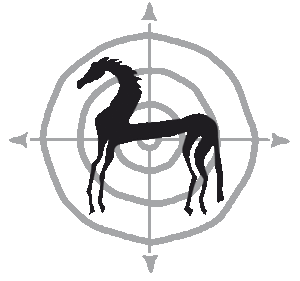Find out how you can easily recognize contracted hooves
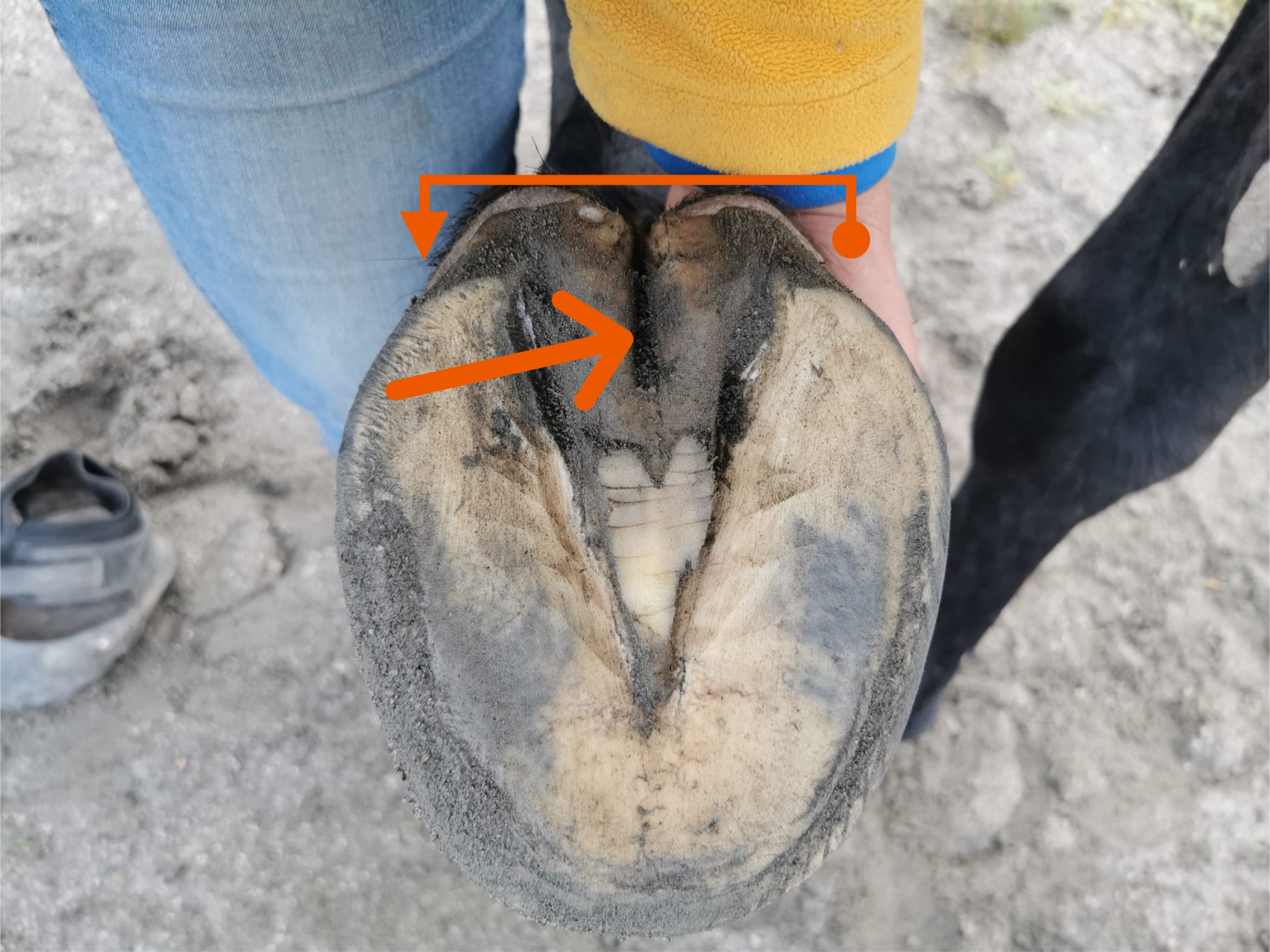
Contraction (2): How to easily recognize this hoof problem
Our last post discussed the work of an english veterinarian, Bracy Clark (find it here).
Bracy Clark did some very interesting experiments with horse hooves.
One of the things he showed with these experiments was that shoeing over time will change the shape of the hoof.
The whole hoof gets more narrow and ‘squeezed’, especially in the area around the bulbs and frog. This is called contraction.
In this post you will find real-life examples of contracted hooves. And you will find explanations of how you can easily recognize this hoof problem.
Real-life examples
Bracy Clark did his experiments around 1810. Photography was not yet invented then*. So he used engravings (a kind of drawings) to document what he found.
Engravings can be a bit harder to ‘read’. In this post, we will therefore look at how contraction looks IRH (In Real Horses).
Below you will find photographs of horses with contraction. And explanations of what to look for.
A hoof is not just a ‘clump of horn’…
The outside of a hoof can look like a solid ‘clump of horn’.
That makes it easy to forget that there is actually a lot going on on the inside! And many of the structures and tissues inside can get ‘squeezed’ in a hoof that is too narrow (‘contracted’).
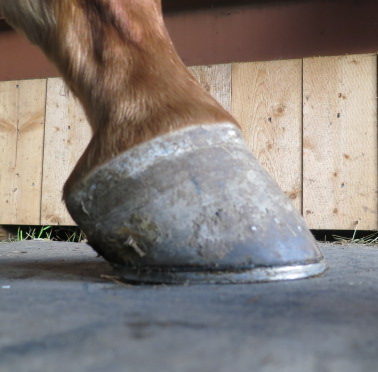
The solid-looking outside of a hoof can make it easy to forget…
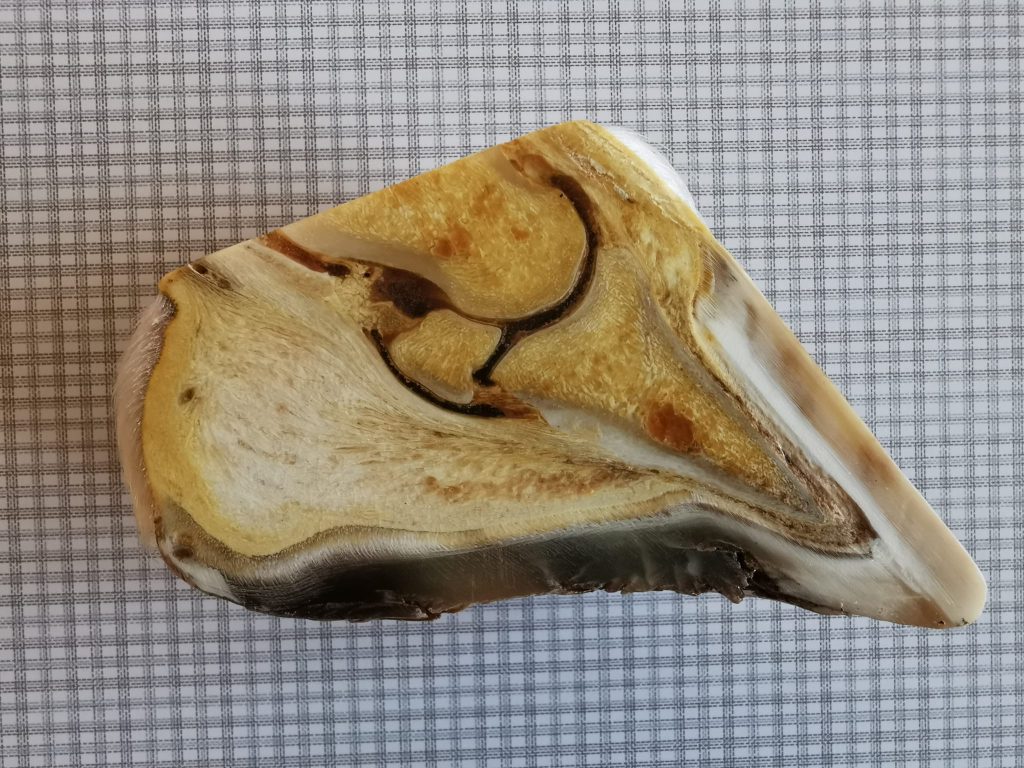
….about all the structures on the inside! For example: the bones, the tendons, the lamellae and so on.
The hoof capsule: Horn can deform!
The hard outside of the hoof is called the hoof capsule. Although horn is a hard material, it can change shape over time.
In a contracted hoof, the whole hoof capsule is too narrow.
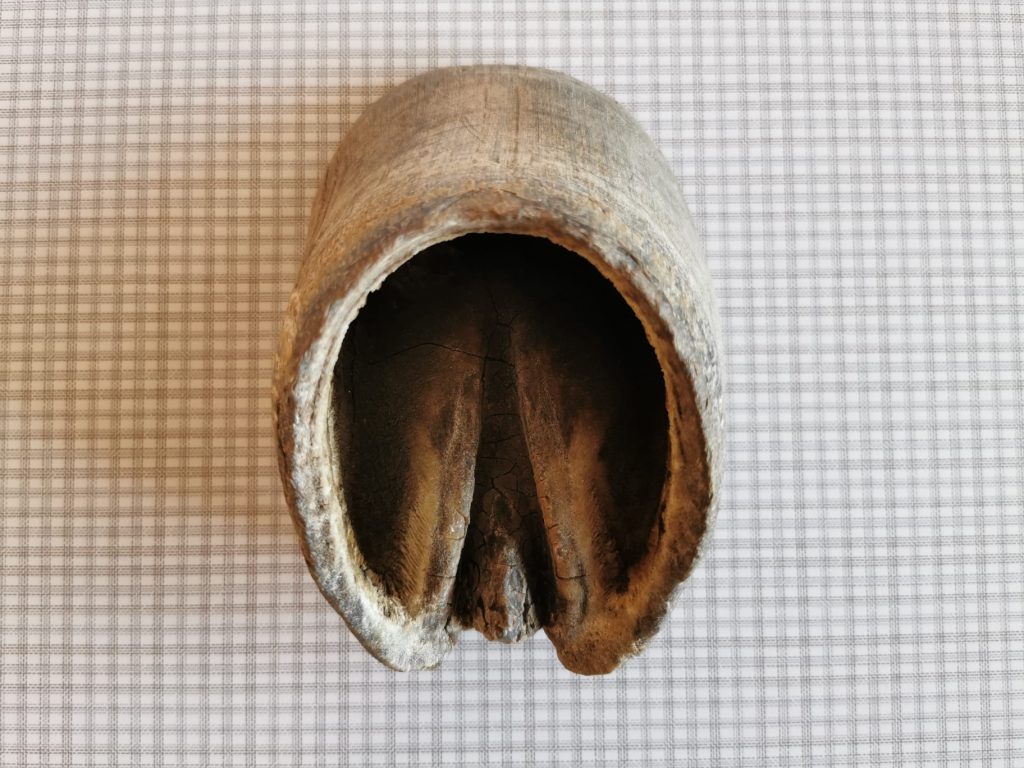
Hoof Capsule with contraction
These pictures (above and below) show a hoof capsule where the ‘heels’ of the hoof are very close together.
The dotted line in the picture below shows one of the bars, seen from the inside. It is clear that the bars are also very close together.
In between the bars is the frog area. In this hoof capsule, that area is very small and narrow.
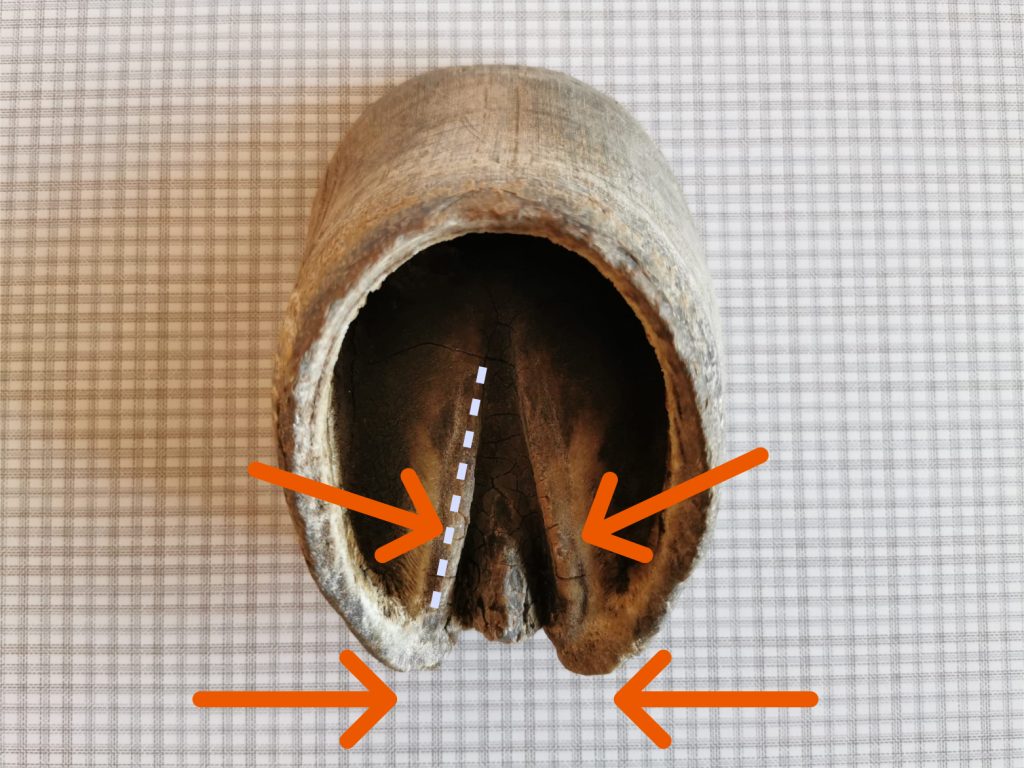
Contracted hoof capsule: the orange arrows show that the hoof is very narrow at the ‘back end’. The dotted line shows one of the bars, seen from the inside.
Healthy and contracted hooves: examples
Let’s start with an example of a healthy hoof. The picture below is from the front hoof of a 12 year-old pony who never had shoes on.
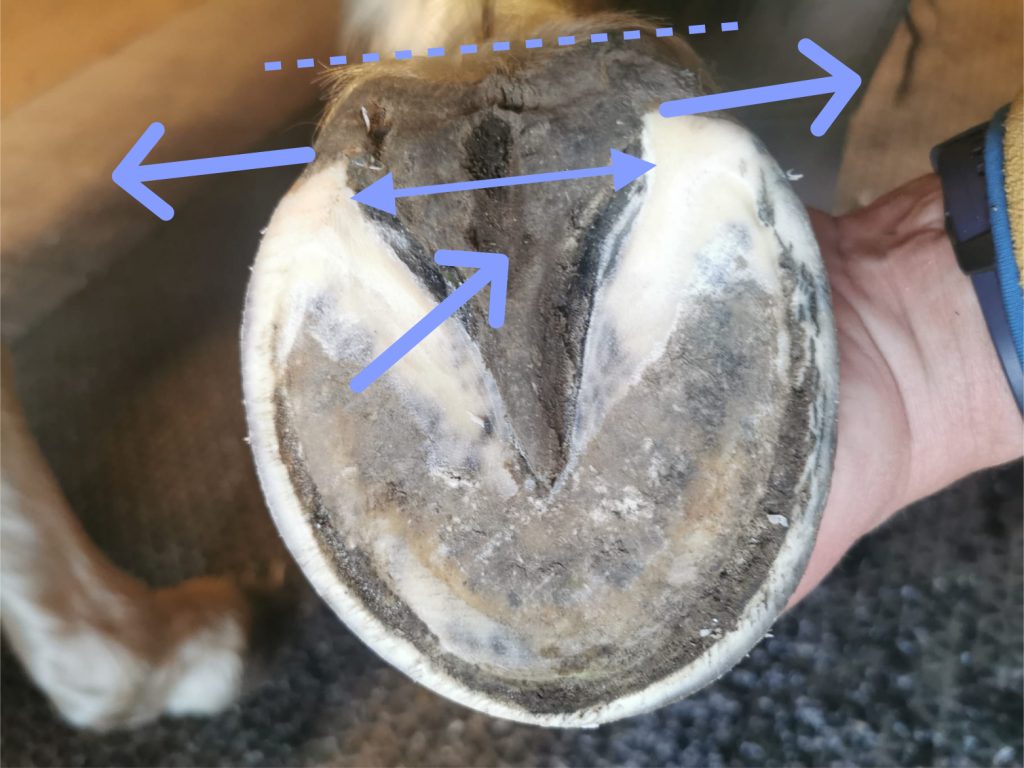
Underside of a healthy pony hoof. Bulbs in straight line, heels wide and open, wide frog area, ‘dimple’ in frog visible and not too deep.
The dotted line shows that the ‘bulbs’ of the hoof are lying almost in a straight line. And the bulbs are ‘fleshy’, full and round.
The heels are open and wide (far apart).
The frog is wide, too.
In the middle of the frog is a ‘dimple’. This is called the sulcus of the frog, or the ‘central groove’.
A healthy frog should have that dimple!
Examples of contracted hooves
The following pictures are of the front hooves of a 9 year-old large Warmblood riding horse.
Both feet are very contracted. This horse has been diagnosed with Podotrochlear Syndrome (also known as Podotrochlosis, Navicular Disease or Navicular Syndrome).
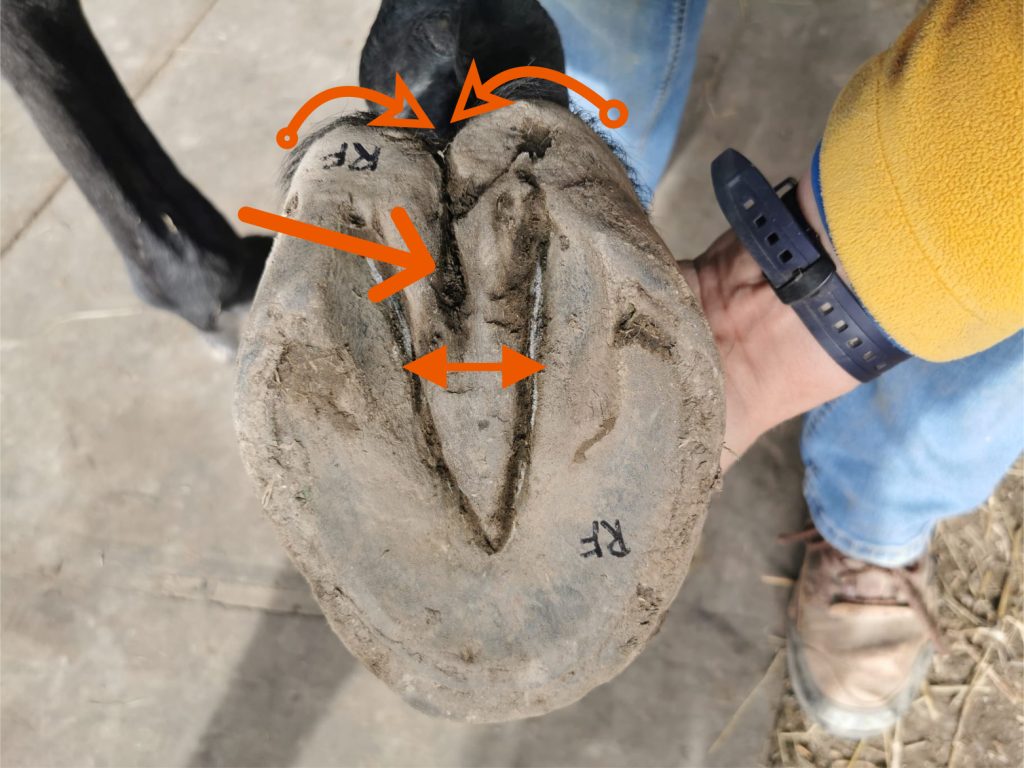
Contracted right front hoof. Bulbs squeezed together and turned inwards. Very narrow frog with deep sulcus (‘dimple’). Pear shape.
The picture above is of the right front hoof.
The bulbs are so ‘squeezed in’ that they actually have turned inwards and down. They look very small.
The whole frog is very narrow.
The ‘dimple’ in the middle of the frog has been so squeezed together that it almost looks like a hole/crack.
The shape of the hoof is not round or oval, but more pear-shaped.
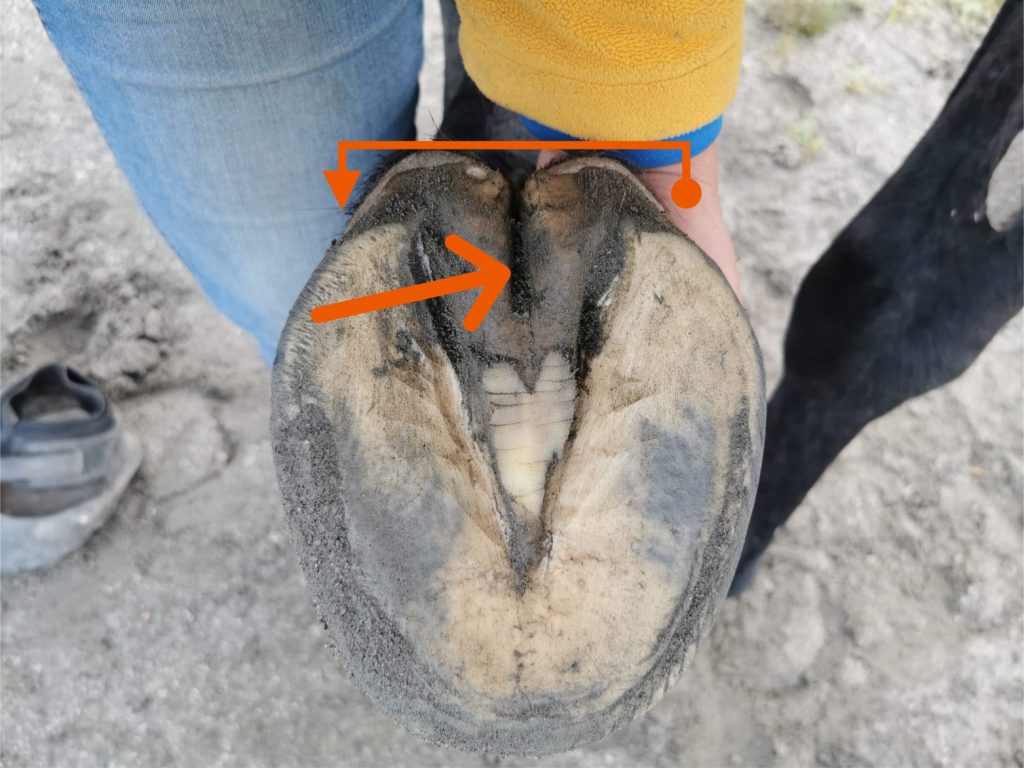
Contracted left front hoof. Abnormal ‘pear shape’. Bulbs turned inwards and squeezed together so much that it looks like a deep crack in the frog.
Above you see a picture of the left front hoof of the same horse (9 year-old large warmblood riding horse).
This hoof, too, is very contracted and pear-shaped.
The bulbs are squeezed together and turned inwards. They are so squeezed together that the whole middle section of the frog, including the sulcus (‘dimple’) almost looks like a deep crack!
It’s easy to imagine that the area around this ‘crack’ will be sore. Horses with this type of contraction often react strongly if you try to clean this ‘crack’ with a hoof pick.
Of course, it’s also easy for dirt to get in there and create a perfect environment for bacteria and such. Which can be major contributing factor to thrush.
Contraction: The back view
In most contracted hooves, the contraction is also clearly visible when you look at the hoof from the backside (bulb/heel side).
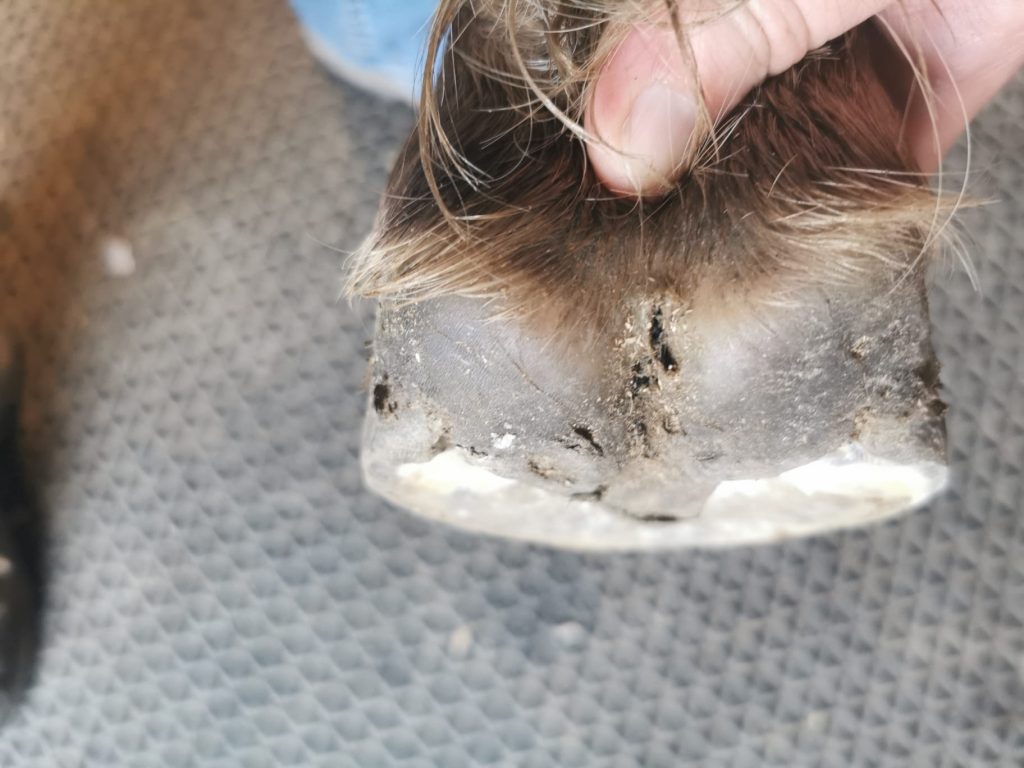
Healthy pony hoof, seen from behind. Full bulbs and wide heels.
The picture above shows the heel/bulb area of a 4 year-old pony that never has been shod.
The bulbs are full, round and soft.
There is no deep opening or ‘crack’ between them.
What is visible from the hoof shows a healthy hoof with good horn quality.
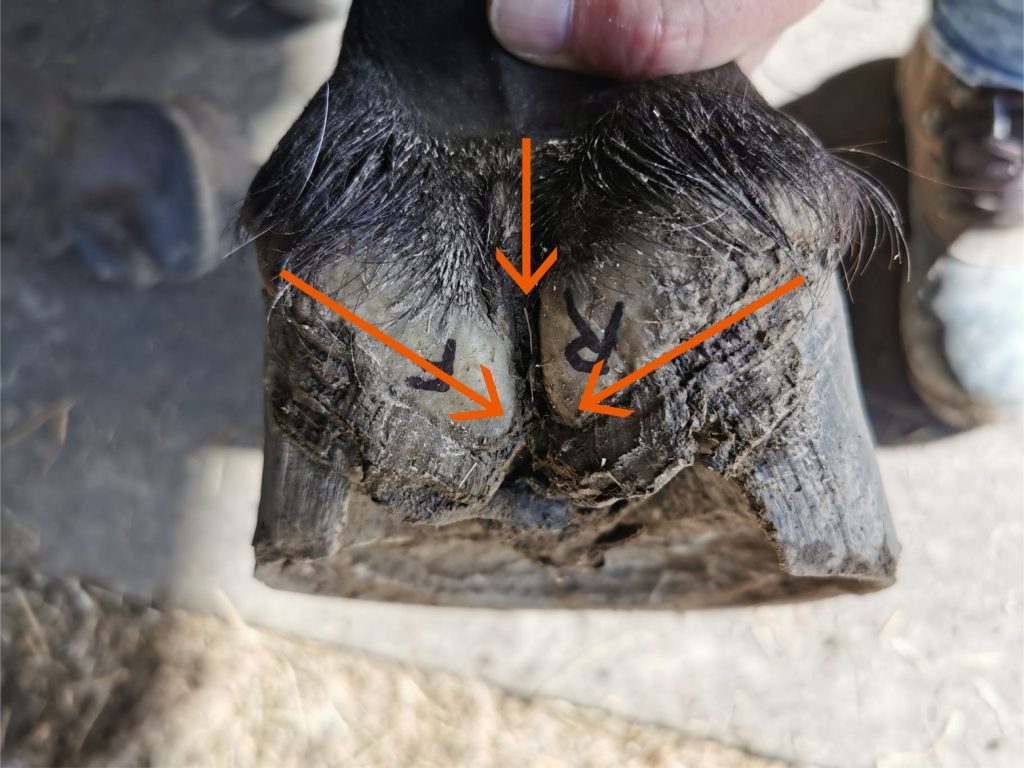
Contracted hoof seen from behind. The bulbs are small and thin. The heels and bulbs are turned in and squeezed together, creating a deep ‘crack’.
The picture above is from the same 9 year-old large Warmblood riding horse as in the pictures above.
Instead of being round and full, the bulbs are very thin, small and ‘flat’.
The whole heel/bulb area is pressed together, which creates a deep split/’crack’ between the bulbs.
What can be seen from the rest of the hoof shows a dry and ‘crumbly’ horn quality.
Bracy Clark’s Experiment
It’s only appropriate to finish this blog post by returning to Bracy Clark, and one of his experiments.
The picture below shows one of the engravings from one of the books he wrote:
‘A series of original experiments on the foot of the living horse, exhibiting the changes produced by shoeing, and the causes of the apparent mystery of this art’ (Bracy Clark, 1809)
Note: Many of Bracy Clark’s publications are in the public domain. Meaning you can read and download them for free!
You can find the one above here:
https://wellcomecollection.org/works/e2tasvtt/items?canvas=132
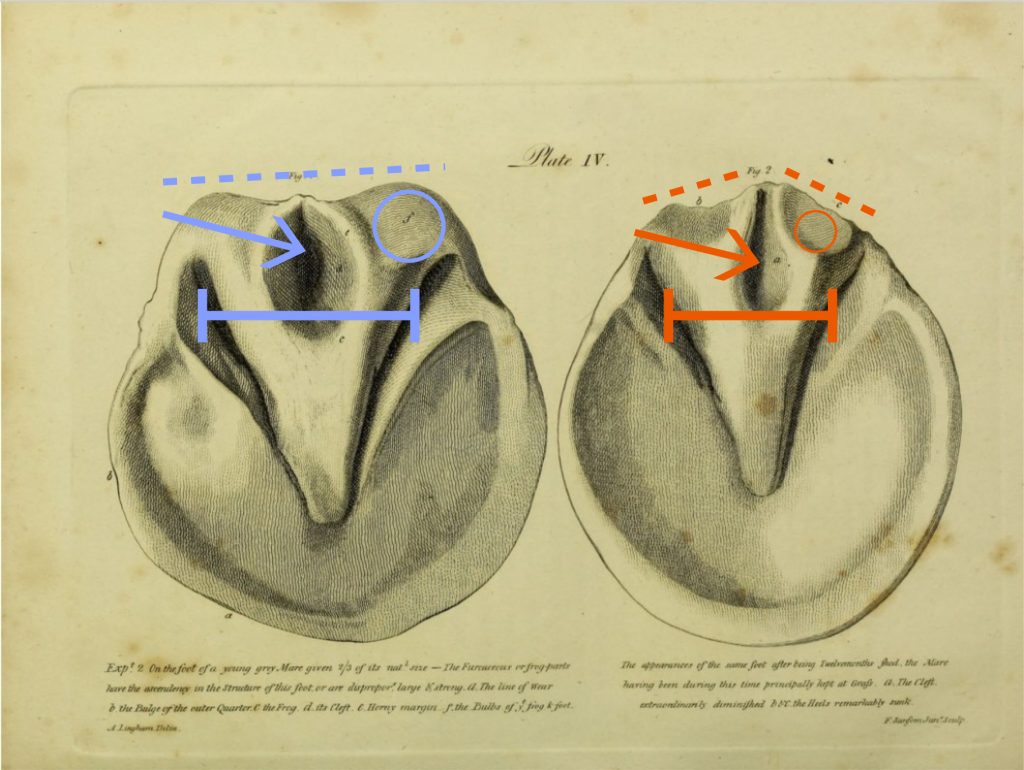
Original Text: Exp. 2 On the foot of a young grey Mare given 2/3 of its nat.l size – The Furcaceous or frog parts have the ascendency in the Structure of this foot, or are disprop. large & strong. (-) The appearances of the same foot after being Twelvemonths shod, the Mare having been during this time principally kept at grass. A. The Cleft. extraordinarily diminished. B & C. The Heels remarkably sunk. (‘A series of original experiments on the foot of the living horse’, Bracy Clark, 1809)
One of the experiments Bracy Clark did was making plaster casts of the hooves of horses. He did so before they got shoes on, and then after some time.
The engravings above show the hooves of a young mare, before shoeing. And then again after twelve months with shoes.
The hoof on the right (after a year with shoes) is clearly more contracted.
The frog are is narrower.
The ‘central groove’/’sulcus’ in the frog has gotten much smaller.
The bulbs, too, have gotten much smaller and have almost ‘caved in’. In the picture on the left the bulbs are almost in a straight line, but after the shoeing period they have turned inward.
Questions about contraction?
Do you have any questions about contraction, or do you want to share your thoughts?
Feel free to leave a comment in the section below.
We love feedback and will try to answer your questions as soon as possible.
We look forward to hearing from you!
* Photography was invented in 1822 by a Frenchman called Nicéphore Niépce. He developed a technique called heliography, which he used to create the world’s oldest surviving photograph, from 1927.
